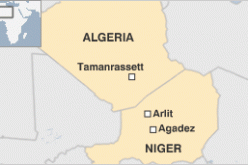The New Times – The information and communication technology sector, including Internet and broadband, has suffered from limited fixed-line infrastructure and high prices, but developments in the fixed network market are beginning to change this situation.
Interest from investors in the country’s ICT sector has been buoyant, especially over the last few years.
A few months back, the government signed a deal with Korea Telecom to build a national fibre backbone. In September, the firm also got another agreement to build and operate the national LTE network for 25 years.
Today, Rwanda has over 3,000km of fibre optic cable, but only about 8.3 per cent of the population currently has access to the Internet.
This state of affairs does not portend well for the country, especially when you consider that 95 per cent broadband penetration would translate into a 10 – 13 per cent GDP growth.
“We have invested a lot of funds to ensure fibre optics go beyond Kigali so that the rural masses can access cheap Internet,” said Ebenezer Asante, the MTN chief executive officer, in an interview.
Asante noted that there is a need to conduct digital education and demonstrations to expose more people to the digital experience.
“We need to target the youth, not only to use mobile data and broadband, but also in developing content and applications that will serve their needs and those of the community,” he said.
“We need local content. This can only come from local people, especially students in universities and polytechnics.”
Asante noted that if the population knows how to use the Internet, many people, particularly the youth, would be able to develop programmes that can be used to ease lives and business operations.
Last month, an Android mobile phone operated application, ‘Mfarms Agribusiness Solutions’ was rolled out by the United States Agency for International Development (USAID) to help agro-dealers measure the amount of fertilisers to supply to farmers each season.
“If similar solutions are developed locally, challenges of food security, awareness, poverty and education would be sorted as mobile broadband bridges the gaps. Someone in Butare, with the same broadband connectivity would be at the same level with someone in Kigali,” explained Asante.
For many mobile Internet users, the attraction lies in the smart phone applications that allow them to make calls or send messages for free.
“Without Internet, it’s hard for me to communicate. Programmes like Viber, WatsApp, Facebook and BlackBerry Messengers enable one to make calls and text messages at affordable rates, anywhere in the world using Internet,” said Claire Umuhoza, a resident in Kanombe sector.
According to sector observers, there is a decline in voice and data revenues for telecom firms and internet café operators due to the latest smart phone innovations that give users Internet access.
However, for the sector players, the low data penetration levels in the country presents an opportunity to invest heavily in mobile broadband, a formal vehicle to smart digital usage through mobile data.
Residents of the City of Kigali currently have access to free wireless Internet in specific areas under what has been dubbed the ‘Smart Kigali’ initiative that was launched in September.
The designated areas, where people have access to wireless internet include 15 KBS buses, King Faisal Hospital, Nyabugogo Taxi Park and selected commercial buildings and restaurants in the city.
The initiative is a partnership between the City of Kigali, Internet service providers and government agencies like the Rwanda Utilities Regulatory Agency and Rwanda Development Board, as well as the Rwanda Hotel and Restaurants Association.
Minister for Youth and ICT, Jean Philbert Nsengimana then said the initiative would significantly contribute toward delivering better services.
“We want Internet broadband to be accessible so that all Rwandans can get information anytime they want it,” he said.










